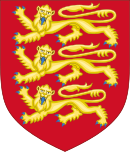
Back Boroughs in Londen Afrikaans قصبات لندن Arabic Borough de Londres AST London borosu Azerbaijani Бора Лондана Byelorussian Райони на Лондон Bulgarian Districtes de Londres Catalan Londýnské městské obvody Czech Bwrdeistref Llundain Welsh London boroughs Danish
| London borough | |
|---|---|
 The thirty-two London boroughs in England | |
| Category | Local authority districts |
| Location | Greater London |
| Created by | London Government Act 1963 |
| Created |
|
| Number | 32 |
| Possible types |
|
| Possible status |
|
| Populations | 150,000–400,000 |
| Areas | 12–150 km2 |
| Government |
|
| This article is part of a series within the Politics of the United Kingdom on the |
 |
|---|
The London boroughs are the 32 local authority districts that together with the City of London make up the administrative area of Greater London, England; each is governed by a London borough council. The present London boroughs were all created at the same time as Greater London on 1 April 1965 by the London Government Act 1963 (c. 33) and are a type of local government district. Twelve were designated as Inner London boroughs and twenty as Outer London boroughs. The City of London, the historic centre, is a separate ceremonial county and sui generis local government district that functions quite differently from a London borough. However, the two counties together comprise the administrative area of Greater London as well as the London Region, all of which is also governed by the Greater London Authority, under the Mayor of London.
The London boroughs have populations of between 150,000 and 400,000. Inner London boroughs tend to be smaller, in both population and area, and more densely populated than Outer London boroughs. The London boroughs were created by combining groups of former local government units. A review undertaken between 1987 and 1992 led to a number of relatively small alterations in borough boundaries. London borough councils provide the majority of local government services (schools, waste management, social services, libraries), in contrast to the strategic Greater London Authority, which has limited authority over all of Greater London.
The councils were first elected in 1964, and acted as shadow authorities until 1 April 1965. Each borough is divided into electoral wards, subject to periodic review, for the purpose of electing councillors. Council elections take place every four years, with the most recent elections in 2022, and the next elections due in 2026. The political make-up of London borough councils is dominated by the Conservative, Labour and Liberal Democrat parties. Twenty-eight councils follow the leader and cabinet model of executive governance, while five have directly elected mayors (Croydon, Hackney, Lewisham, Newham, and Tower Hamlets). The City of London is instead governed by the City of London Corporation (and the Inner and Middle Temples, which are not governed by the City of London Corporation).